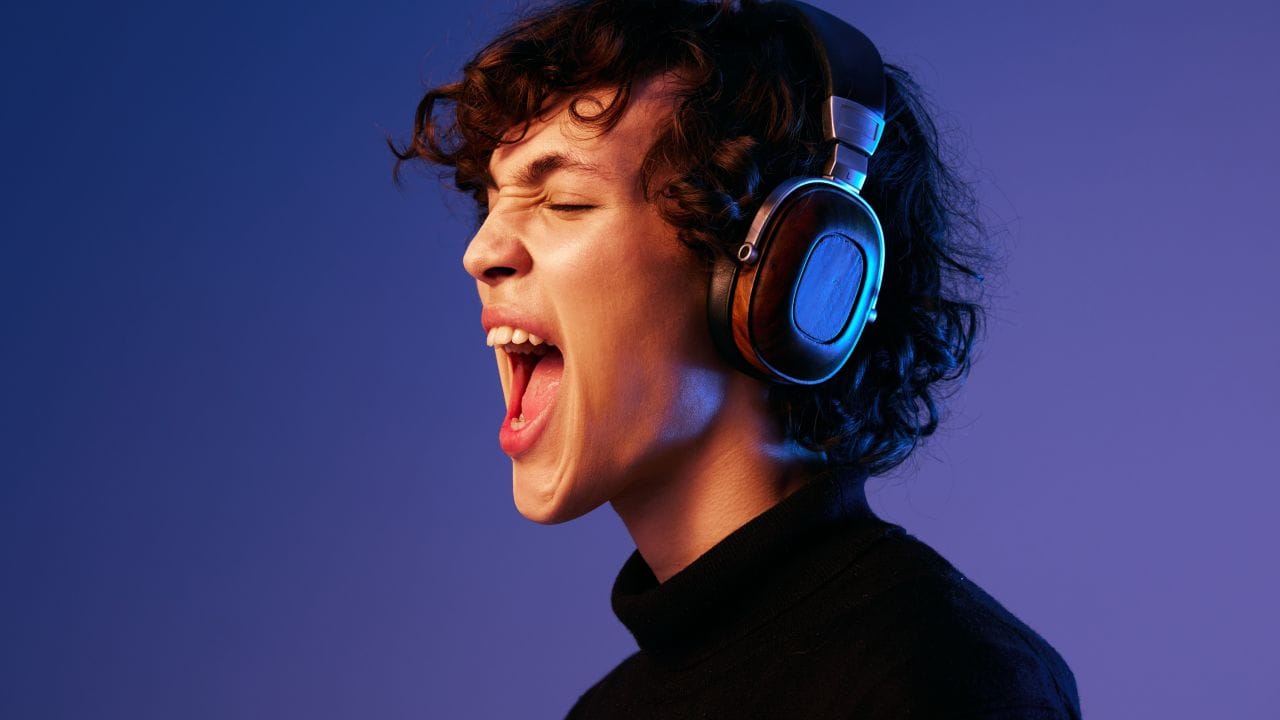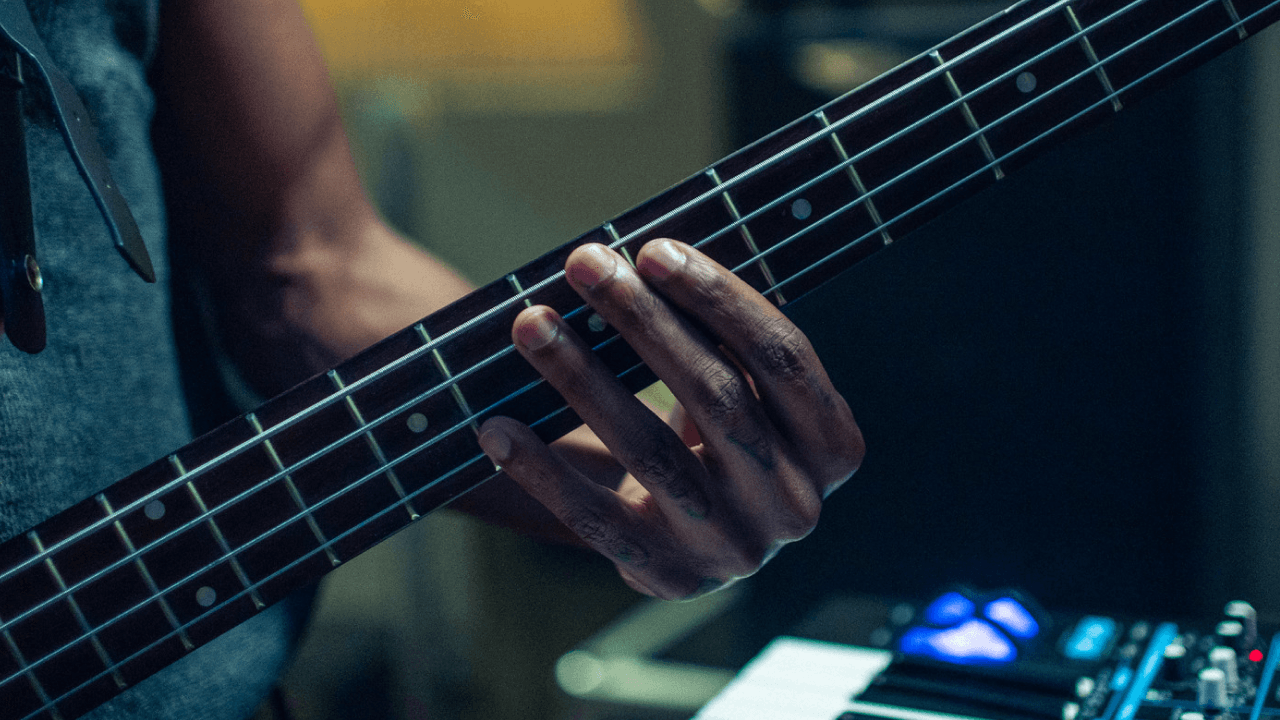Do you know how to breathe while singing? Spoiler: it might be less straightforward than it seems. Catching your breath between lines is critical, but that’s not all. There is far more at play when it comes to breathing techniques for singing.
A violinist regulates the bow’s tension for a clean, precise play. A saxophonist adjusts the reeds for that smooth, rich sound. Likewise, mastering breath management improves your singing voice. It helps you gain nuance and power.
This content will explore the mechanics behind breathing techniques for singing, along with tips to boost your skills. So stay tuned!
The physiology of respiration
How about we take a moment to geek out on the science behind it all? Familiarizing yourself with the mechanics will make you more aware of how to use your breath best when singing.
Your autonomic nervous system is the unsung hero here. It manages your respiratory system without a conscious effort from you. This control system keeps your breathing in check, letting you focus on your craft.
It’s like a symphony of muscles and organs. Everything works together to keep the oxygen flowing (and the vocals on point).
Diaphragm dynamics and role
Picture the diaphragm as the MVP (Most Valuable Player) of your respiratory team. This muscle sits right under your lungs, calling the shots whenever you inhale and exhale.
Each time you draw breath, that’s your diaphragm’s cue to contract and allow the lungs to fill up. And, when it’s time to exhale, it eases up.
Rib movements in inhalation and exhalation
The muscles between the ribs, called intercostal muscles, also play a big role. The diaphragm and intercostal muscles work together to make breathing easier and ensure a steady oxygen flow.
The ribs move up and outward when they tighten, allowing lung expansion. This way, more air gets in, boosting oxygen intake.
As you exhale, the abdominal muscles cooperate with the diaphragm. These muscles act as stabilizers, helping it stay in place. They stop the diaphragm from collapsing too fast as you breathe out, gently contracting to lift it and push the air out of the lungs.
Lung capacity and vocal performance
Lung capacity is about the largest amount of air you can hold after deep breathing. In vocal training, enhancing it is key for improving power, control, and endurance. Singers with better lung capacity tend to sustain notes for longer without tiring, for instance.
What is breath support?
Breath support refers to the proper use and control of the muscles used in the respiration process. It allows for a steady airflow, preventing strain and fatigue, and improves control over pitch, volume, and more.
Developing good breath support requires strengthening the respiratory muscles (diaphragm included). In other words, they need some good workouts.
What is the difference between breath management and diaphragmatic breathing?
Diaphragmatic breathing for singing highlights the diaphragm’s use for breath control. Meanwhile, breath management is the overall coordination of breath support with vocal production. Both aspects are key to getting a consistent and strong sound when singing.
We can’t underrate the action of the diaphragm, but it’s a mistake to ignore the nearby muscles. Just as important for breath management, they include two groups we've covered earlier:
- The intercostal muscles;
- The abdominal muscles.

6 Breathing techniques for singing
There are many methods to improve breath control and ensure a steady sound. They range from the popular diaphragmatic respiration to the sophisticated methods opera singers use.
Next, you can find some good breathing techniques for singing.
1. Diaphragmatic breathing
This technique is also known as “belly breathing” or “tummy breathing.” It relies on diaphragm use for deep breaths, allowing greater control and support in vocal performances.
2. Costal breathing
As you know, in natural breathing, our rib cages expand. But costal breathing involves conscious control and the lateral expansion of the ribs. Singers also try to expand their rib cages for the most extended duration possible. This way, it’s easier to sustain long phrases.
3. Back breathing
Back breathing enhances breath awareness by enabling singers to sense their breath in the lower back area. This makes breath support multidimensional and holistic — not just frontal.
4. Suspend and release
This technique is about managing breath pressure. Singers hold their breath (suspension) before starting a phrase, creating stillness and energy. Then, while singing, they release it slowly to ensure vocal control and dynamics.
5. Anchoring
Anchoring provides a sense of stability to your body, particularly in the shoulders and chest. The goal is to avoid holding on to tension that can make it hard to breathe. Here, balancing relaxation with muscle control is key.
6. Appoggio
Opera singers heavily rely on this breath-support technique, named after the Italian word for “support.” They engage the muscles of the lower abdomen and back in a controlled manner. This helps secure a solid foundation for singing.
Good breathing exercises for singers
Practice doesn't always make perfect. But with consistency in the mix, the odds are on your side.
Frequent exercises are great for taking in new techniques — including breathing techniques for singing. When it’s showtime, the technique will shine through easily if you do your homework.
Here are some practical exercises to help you make breath management second nature:
- Hissing: For this exercise, you should make a hissing sound while trying to project it to a specific point in the room. This helps you achieve better breath control and a more efficient use of air;
- Lip buzz, or lip trill: Buzzing your lips together while exhaling helps strengthen the muscles used for respiration and phonation (the process of making sounds with your voice). This calls for steady airflow and control over the diaphragm;
- Straw breathing: Breathing through a straw promotes slow and controlled exhalation. Over time, it contributes to lung capacity and respiratory muscle strength. If you try this, take it slow. Also, use your diaphragm and abdominal muscles to push the air out (not your chest);
- Vocal fry: This kind of sound happens when the vocal cords vibrate lightly. Besides relaxing and strengthening them, vocal fry exercises can improve your breath support.
Breathing exercises to avoid at all costs
Some respiratory exercises can be fruitless and possibly harmful. For example, some breath-holding exercises can lower oxygen levels. This may cause dizziness or even fainting. Besides, some people might get a sudden rise in blood pressure, straining the cardiovascular system.
Hyperventilation exercises with shallow, quick breaths are also a bad idea. They can cause lightheadedness and even panic attacks in some cases.
Another one to stay away from is forceful exhaling, also known as “blow breathing,” which can strain and damage the vocal folds. And, if you’re trying to become a better singer, that’s very counterproductive.
Making every breath count
Learning the ins and outs of breath management isn't just about nailing those vocal runs. It’s also about giving your lungs the workout they deserve. And it’s about setting the stage for vocal health.
In short, focusing on proper breathing techniques for singing, as well as exercises, can do wonders. This way, you’ll strengthen your respiratory muscles and take your lung capacity to the next level.
Want more helpful tips? In this video, a vocal coach explains how Moises can help with singing warmups!







